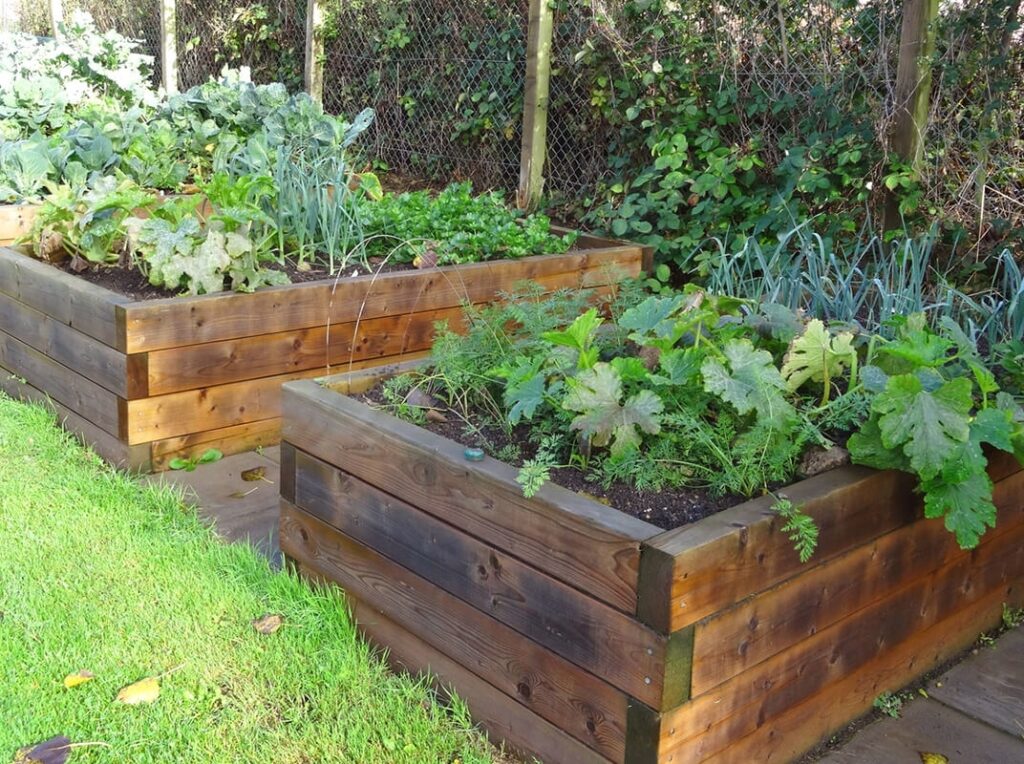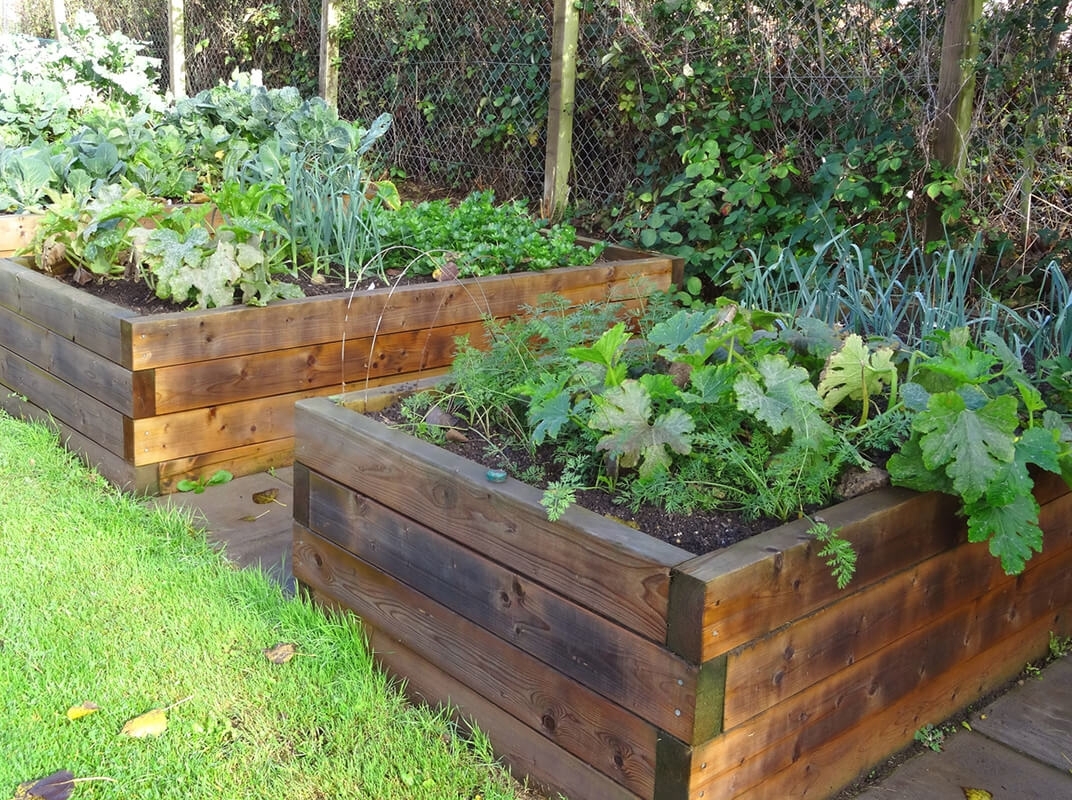
Creative Landscaping Ideas with Railroad Ties: A Timeless and Sustainable Approach
Railroad ties, also known as railway sleepers, offer a unique and robust material for various landscaping projects. Once essential components of railway tracks, these sturdy wooden beams have found a second life in gardens and outdoor spaces across the country. Incorporating landscaping ideas with railroad ties can add a rustic, durable, and sustainable element to your property. This article explores a range of creative applications, providing inspiration and practical tips for integrating railroad ties into your landscape design. The beauty of landscaping ideas with railroad ties lies in their versatility, allowing for both functional and aesthetic enhancements to your outdoor living areas.
The Enduring Appeal of Railroad Ties in Landscaping
Railroad ties bring a certain charm and character that’s hard to replicate with modern materials. Their weathered appearance and substantial size evoke a sense of history and permanence. Beyond aesthetics, their durability and strength make them ideal for structural landscaping elements. Let’s delve into some of the most popular and effective ways to use railroad ties in your yard.
Retaining Walls and Terraces
One of the most common uses for railroad ties is building retaining walls. These walls can help prevent soil erosion, create level planting areas on sloped properties, and add visual interest to your landscape. When constructing a retaining wall with railroad ties, proper drainage is crucial. Install a perforated drain pipe behind the wall to prevent water buildup, which can compromise the wall’s stability. Backfill with gravel to further enhance drainage. Securing the ties together with rebar or long screws is essential for a sturdy, long-lasting structure. Consider staggering the ties for a more visually appealing effect. Using landscaping ideas with railroad ties for retaining walls provides both functional support and aesthetic appeal. [See also: Building a Retaining Wall with Railroad Ties]
Garden Beds and Borders
Railroad ties can be used to create raised garden beds or to define borders around flower beds and vegetable gardens. Their height helps to elevate plants, making them easier to tend to and providing better drainage. When using railroad ties for garden beds, consider lining the inside with plastic to prevent soil from coming into direct contact with the treated wood. This is particularly important if you are growing edible plants. The visual contrast between the dark wood of the ties and the vibrant colors of the plants creates an attractive focal point in your garden. Embrace landscaping ideas with railroad ties to frame your garden beautifully.
Pathways and Steps
Create unique and rustic pathways by laying railroad ties end-to-end or side-by-side. For steps, stack the ties to create risers and fill the treads with gravel or mulch. Ensure the ties are level and securely anchored to prevent tripping hazards. A pathway made of railroad ties adds a natural, organic feel to your garden, blending seamlessly with the surrounding landscape. Consider spacing the ties apart and filling the gaps with gravel, moss, or ground cover plants for a more textured and visually interesting path. Explore landscaping ideas with railroad ties to design inviting pathways throughout your property.
Water Features
Railroad ties can be incorporated into water features such as ponds, waterfalls, and fountains. Use them to create borders around ponds, build small bridges over streams, or construct the base of a waterfall. The natural look of the wood complements the water element, creating a tranquil and inviting atmosphere. Ensure that the ties are properly sealed or treated to prevent water damage and prolong their lifespan. Remember to consider the environmental impact of using treated wood near water sources. Think about landscaping ideas with railroad ties when planning your water feature for a natural, rustic look.
Outdoor Furniture and Structures
For the more ambitious DIY enthusiast, railroad ties can be used to create outdoor furniture such as benches, tables, and even small sheds or pergolas. Their strength and durability make them ideal for building sturdy and long-lasting structures. When building furniture, pay attention to the comfort and ergonomics of the design. Sand down any rough edges and consider adding cushions or padding for extra comfort. Sealing the wood will protect it from the elements and extend its lifespan. Implementing landscaping ideas with railroad ties can result in unique and functional outdoor furniture.
Considerations When Using Railroad Ties
Before embarking on a landscaping project with railroad ties, it’s essential to consider a few key factors:
Treatment and Safety
Most railroad ties are treated with creosote, a preservative that protects the wood from rot and insects. However, creosote can be harmful to humans and the environment. When handling railroad ties, wear gloves and protective clothing to avoid direct skin contact. Avoid using railroad ties in areas where children or pets may come into contact with them, particularly near vegetable gardens or play areas. Consider using alternative materials for projects where safety is a primary concern. Always research local regulations regarding the use of treated wood in landscaping. Prioritize safety when considering landscaping ideas with railroad ties.
Sourcing and Sustainability
Where you source your railroad ties is also an important consideration. Look for suppliers who offer reclaimed or recycled ties, which are often more environmentally friendly than newly treated ones. Reclaimed ties have already served their purpose on the railway and are being repurposed for landscaping, reducing the demand for new wood and minimizing waste. Alternatively, consider using alternative materials such as composite lumber or concrete blocks, which offer similar aesthetic and functional benefits with less environmental impact. Choose sustainable options when exploring landscaping ideas with railroad ties.
Weight and Handling
Railroad ties are incredibly heavy, weighing several hundred pounds each. This makes them difficult to move and handle, requiring specialized equipment such as a forklift or tractor for larger projects. If you are not experienced in handling heavy materials, consider hiring a professional landscaping contractor to assist with the installation. Proper planning and preparation are essential to ensure a safe and efficient project. Always prioritize safety when implementing landscaping ideas with railroad ties due to their weight.
Alternatives to Traditional Railroad Ties
If concerns about creosote or sourcing prove too significant, several alternatives mimic the look and feel of railroad ties without the associated drawbacks. Composite lumber options, made from recycled plastics and wood fibers, offer durability and resistance to rot and insects. Concrete sleepers, cast in molds to resemble wood, provide a similar aesthetic with increased longevity and reduced environmental impact. These alternatives provide a way to achieve the desired look while mitigating potential health or environmental concerns. Consider alternatives when planning landscaping ideas with railroad ties for safety and sustainability.
Inspiring Examples of Landscaping with Railroad Ties
To further inspire your own landscaping projects, here are a few examples of how railroad ties can be used creatively:
- Rustic Fire Pit Surround: Use railroad ties to create a circular or square enclosure around a fire pit, providing seating and a defined space for outdoor gatherings.
- Raised Vegetable Garden: Build a raised garden bed with railroad ties, providing better drainage and easier access for planting and harvesting.
- Natural Staircase: Create a staircase on a sloped yard by stacking railroad ties and filling the treads with gravel or mulch.
- Pond Border: Define the edge of a pond or water feature with railroad ties, creating a natural and attractive border.
- Play Area Border: Use railroad ties to create a border around a children’s play area, providing a safe and defined space for play.
Conclusion: Embracing the Rustic Charm of Railroad Ties
Incorporating landscaping ideas with railroad ties can add a touch of rustic charm, durability, and sustainability to your outdoor spaces. From retaining walls and garden beds to pathways and water features, the possibilities are endless. By carefully considering the treatment, sourcing, and handling of railroad ties, you can create a beautiful and functional landscape that reflects your personal style and values. Whether you’re aiming for a rustic, natural look or a more modern and minimalist design, railroad ties offer a versatile and timeless solution for enhancing your outdoor living areas. Remember to prioritize safety and sustainability when planning your project, and enjoy the process of transforming your landscape with the enduring appeal of railroad ties. They offer a sustainable and aesthetically pleasing solution to various landscaping needs. Ultimately, the success of landscaping ideas with railroad ties depends on careful planning, proper execution, and a commitment to safety and sustainability.

